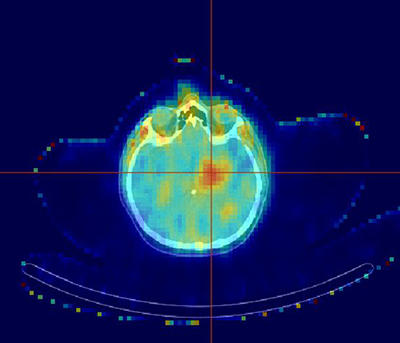glioblastoma and brain cancers
DESCRIPTION
Glioblastoma is the most frequent primary brain tumor in adults, representing a highly heterogeneous group of neoplasms that are among the most aggressive and challenging cancers to treat. An improved understanding of the molecular pathways has led to the development of various biomarkers and the evaluation of several agents specifically targeting tumor cells and the tumor microenvironment. However, while occasional targeted therapy responses have been documented in patients, to date no targeted therapy has been formally validated as effective in clinical trials. Treatment developments for the glioblastoma are also tested for all brain cancer types.
Sources: Semantic Scholar

APPROVED TREATMENTS
131I-chTNT (Vivatuxin) (glioblastoma)
32P-Colloidal Chromic Phosphate (brain cancer)
131I-Iobenguane (MIBG) (neuroblastoma)
IN DEVELOPMENT
131I-TLX-101 (glioblastoma)
186Re-RNL (glioblastoma)
225Ac-DOTA-SP (glioblastoma)
177Lu-DTPA-Omburtamab (brain cancer, medulloblastoma)
131I-Omburtamab (neuroblastoma)
131I-Naxitamab (neuroblastoma)
67Cu-SARTATE (neuroblastoma, meningioma)
PATIENT ASSOCIATIONS
Europe: CAN CÉ-TU? (BEL), Brainstrust (GBR), The Brain tumour charity (GBR)
North America: American Brain Tumor Association (USA), National Brain Tumor Society (USA), National Brain Tumor Society (USA)
Worldwide: Accelerate Brain Cancer Cure (ABC2), International Brain Tumour Alliance (IBTA), Brain Tumor Foundation
CLINICAL TRIALS
Brain Cancer 131I based clinical trials
Glioblastoma 131I based clinical trials
*non-exhaustive list
Compassionate Use Program (CUP)
CUP enables patients with life-threatening diseases, such as advanced cancer, to resort to experimental treatments when standard anti-cancer solutions and access to clinical trials are not an option. Access to CUP programs depends on local regulations and can vary from one treatment to another.
Ask your referring physicians for more information regarding CUP.


